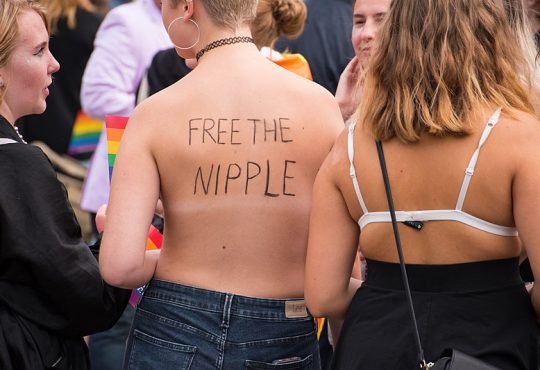“Feminism” is one of the most loaded words in today’s society. Too often it is associated with images of bra-burning and man-hating, which tarnish and can occasionally silence the movement’s call to action.
This, I contest, is a result of distortions and exaggerations spread by both unflattering coverage in the media and through people or groups with negative, and perhaps uninformed, views. Recently, an example of this phenomenon is the blog Women Against Feminism, which is essentially a photo collection of women holding handmade signs that ridicule the entire movement with sweeping, hyperbolic statements.
Instead of giving in to a negative depiction of women’s activists—including using expressions such as Rush Limbaugh’s famously popularized “feminazis”—the idea that should come to mind when thinking of feminism is one that is progressive and positive in nature. I especially agree with bell hooks’ classification in Feminism is For Everybody, defining it as the “movement to end sexism, sexist exploitation and oppression.” Clearly sexism—both institutionalized and individualized—is the common problem that the movement addresses.
The issues facing society today, especially those regarding gender, are oftentimes sensitive and complex. Strict gender labels do not apply to everyone. Men are victims of sexual assault and abuse. No one is immune to society’s unrealistic and warped standards regarding appearance.
On the other end of the spectrum, it is undeniable that women have made advancements in many career fields and (perhaps consequently) the number of stay-at-home fathers has nearly doubled in the past 25 years (two million were recorded in 2012, up from just over one million in 1989).
This begs the question: has feminism has achieved its goal? If so, the term “women’s issues” would be rendered as outdated—in other words, the problems in today’s world would now affect society as a whole, not just women.
In my opinion, they do not. I argue there still are women’s issues and consequently feminism is needed now as much as ever.
“I do think that feminism has served its purpose. I feel like women and men actually are equal in today’s society,” a sophomore at the University said. “There are millions of women in successful careers like doctors and lawyers—most colleges even have a student body that is mostly females, including [Puget Sound].”
This is true: according to Forbes, 57 percent of college students are in fact female, an unbelievable leap when compared to the mere 32 percent of women enrolled in universities in 1950. Yet, after finishing college, it is evident that women do not occupy the same leadership positions that men in our society do.
In 2014, 24 of the Fortune 500 CEOs (4.8 percent) were women. This was actually the all-time highest in the list’s history. Yet in a Jan. 14 report by Pew Research Center (PRC) on women and leadership, on average, Americans admit they find women “indistinguishable from men on key leadership traits such as intelligence and capacity for innovation.”
Yet when questioned about the gender discrepancies within executive and political positions, the two most popular responses were that “women are held to higher standards” and the public is “not ready to hire/elect women leaders.” Clearly, this must be labeled a women’s issue.
The United States government is another key example of the hesitation to identify problems as pertaining specifically to women. Unless you are a white, Christian, middle-aged male with more than a million dollars in your bank account, you are being underrepresented in the American government. According to the PRC and Time Magazine, the 114th Congress, begun on Jan. 6, is 80 percent white, 80 percent male, 92 percent Christian and, for the first time, a majority (50.2 percent) are worth one million dollars or more.
Due to the previously mentioned complexities, many are understandably hesitant to call the skewed representation of our country a “women’s issue.” I concede that it clearly is—and should be—a concern of race, class and religion. Nevertheless, we cannot dismiss the issue of gender oppression simply because it is interwoven with other forms of systemized oppression. Until our country successfully elects officials that accurately depict our nation, this is, amongst other things, a women’s issue.
Furthermore, when opponents of feminism debate, a recurring argument develops, usually acknowledging the fact that men face problems and oppression too. Of course this is true and we should combat issues that affect primarily men, such as higher incidences of violence and homelessness as well as society’s unforgiving notion of masculinity. I believe this is an equally relevant topic, but it does not call for an abandonment of feminism In fact, if one considers bell hooks’s previously mentioned definition, men’s issues actually demand that the movement stay alive.
In our society, complexities are now the norm; we have adapted to new technologies and ideas relatively quickly, and should do so with feminism. In an ideal world, there would not need to be the expression or even the concern of “women’s issues.” Until then, however, we should continue to use the phrase in order to accurately label sexist oppression and help to combat it.





